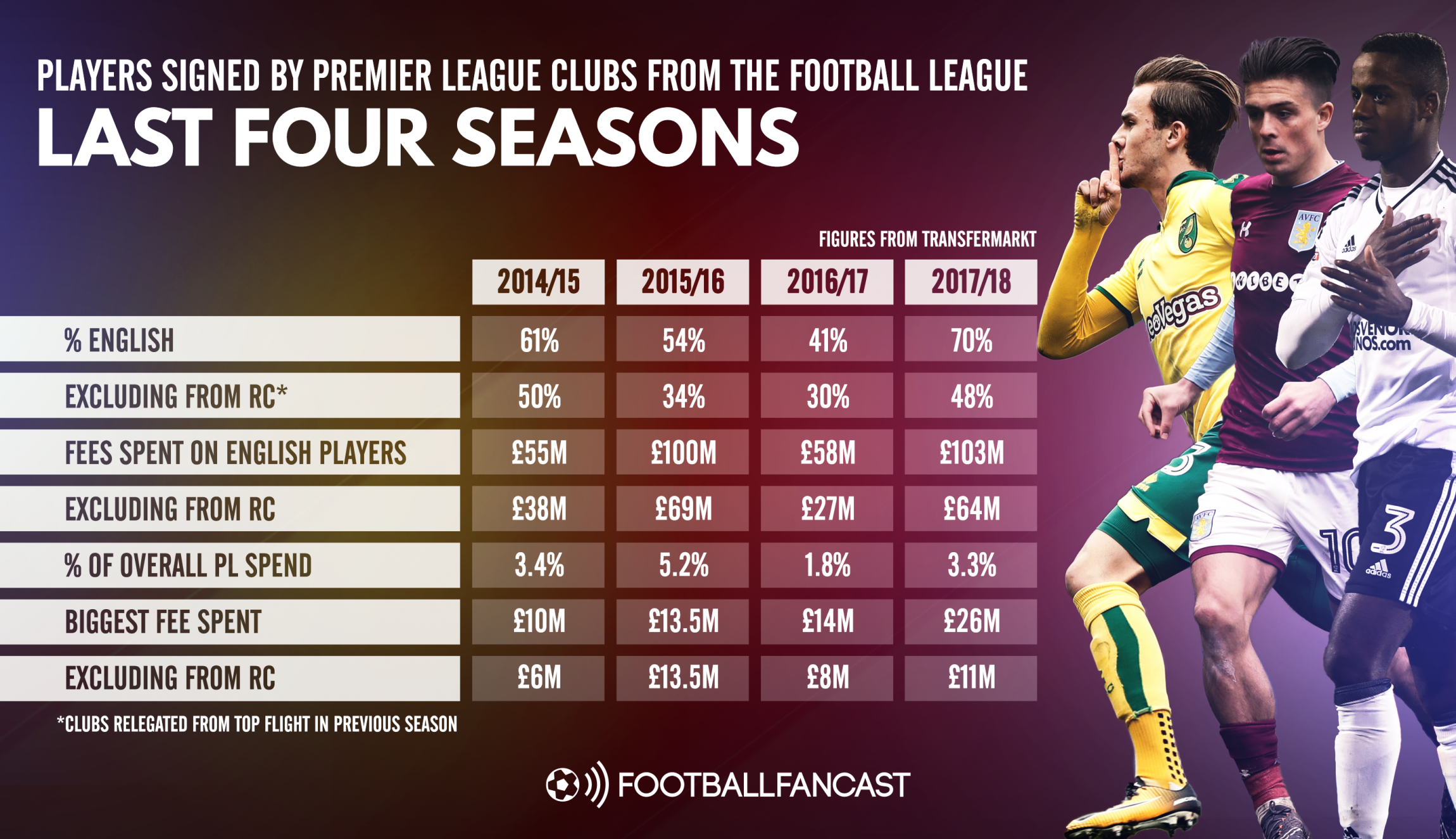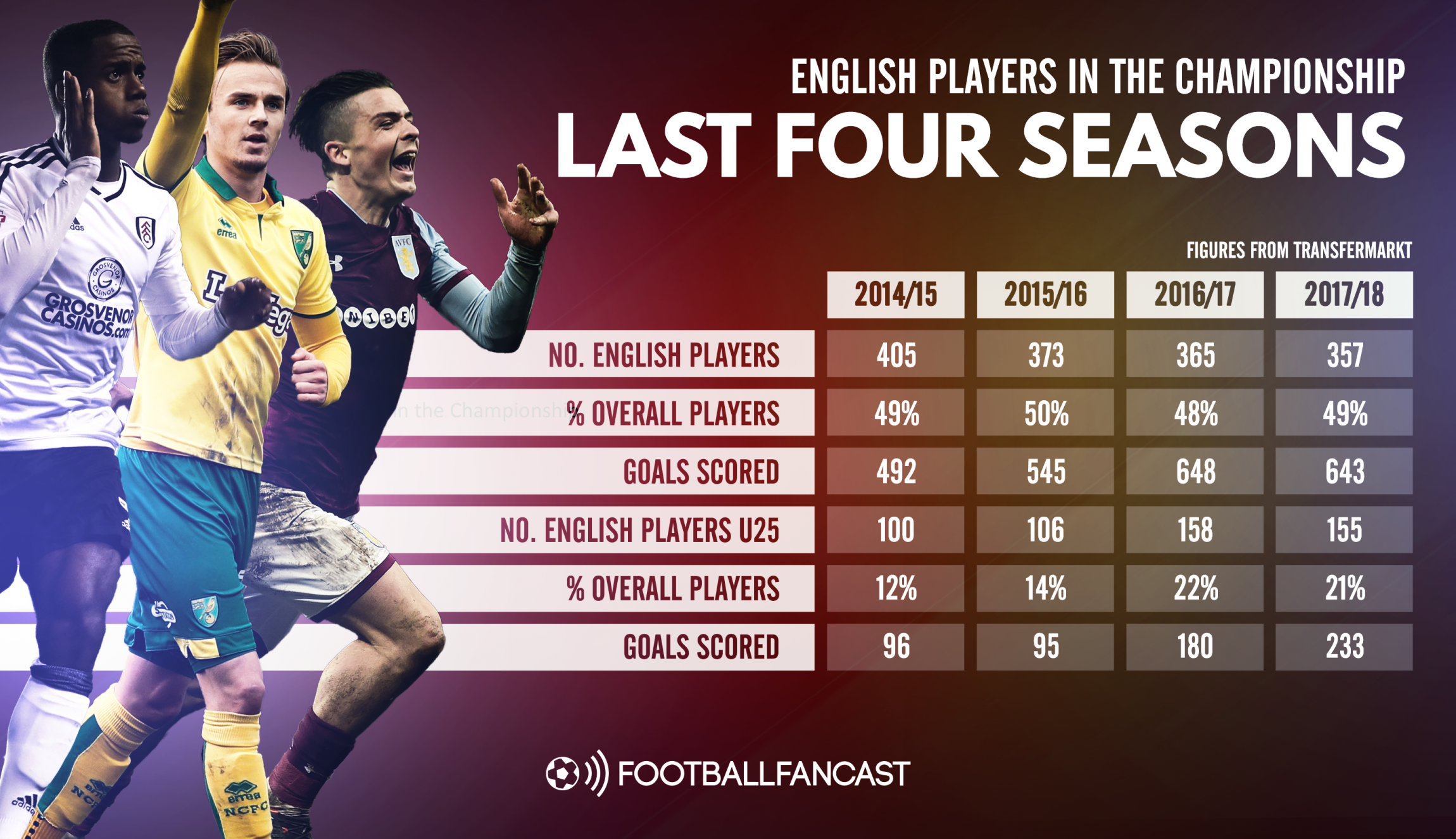The pace of football is so relentless that truly seminal moments can often pass us by without proportional acknowledgement - especially in the middle of a summer transfer window during a World Cup year.
But even amid all the noise of the international tournament potentially becoming overshadowed by political tensions with Russia and the hyperbolic hysteria created by the constant transfer chatter, widespread Premier League interest in three young English players from the Championship stands out as something far more significant than mere annual rumour mongering.
Jack Grealish, James Maddison and Ryan Sessegnon have entered the summer window as the trifecta jewel in the Championship’s crown, their raft of reported suitors ranging from top-eight hopefuls like Everton and Newcastle to top four candidates Chelsea and Tottenham and even title-chasers Manchester United.
We’ve seen Football League talents try to make the step up to the top end of the Premier League before, Wilfried Zaha’s 2012 move to Old Trafford and Dele Alli’s transformation from a third-tier prospect to a Tottenham superstar starting in summer 2015 for example, but for three Championship players to be so heavily courted by such desirable clubs during the same summer is certainly unusual. In fact, it feels like something of a seachange.
The statistics seem to support that idea, too. Despite the level of revenue and consequently transfer spending increasing with practically every season in the Premier League, young English players in the Football League have only felt a pinch. In fact, during the last four seasons, the Premier League has never committed more than 5.2% of its overall season spend to Football League Englishmen under the age of 25, excluding those relegated from the top flight during the previous season, and during 2016/17 that share dropped to a miserly 1.8%.
It represents a glass ceiling that has been meticulously debated for years now - how the sheer intensity and profitability of the Premier League has clogged up pathways for promising home-grown talent. For those in the Football League, the challenge is even harder; unless you gain promotion to the Premier League with a club, chances to make the step up are incredibly few and far between.
In fact, only 69 English players have managed it during the last four years and out of all Premier League signings from the Football League in the first three years of that timeframe, the average position of club they joined was 14th place. Even if players can escape being pigeonholed as Football League calibre, it seems the best they can really hope for is the Premier League’s relegation battle.
The only real exceptions are when players like Alli prove they’re something uniquely special - but even Liverpool weren’t wholly convinced by the England star’s League One performances, allowing Tottenham to swoop instead. During the last two seasons, the only Football League player to join a top six club is Arsenal’s Rob Holding, but the former Bolton man has only ever managed 21 top flight appearances for the Gunners.
[brid playlist="4766" player="12034" title="World Cup 2018"]
Perhaps more demonstrative of how significant the interest in Grealish, Maddison and Sessegnon this summer truly is, though, lays in collective fees rather than percentages. All three are English and under the age of 25, a category of player that fetched just £27million for all signings combined in 2016/17. That’s potentially less than Grealish, Maddison or Sessegnon could cost individually this summer, while their collective price would far exceed the £64million spent last season.
That’s partly due to the incredible inflation of transfer fees in the Premier League, particularly those accompanying English players, but there has been a clear change in opinions on Championship talent too and that hasn’t taken place in a vacuum. Once again, the statistics show there has been something of a transformation in the second tier - it’s now a fantastic breeding ground for young English players who aren’t getting the same chances at top flight level.
The real turning point was the 2016/17 season. While Premier League clubs spent just £58million on English players from the Football League and just £27million on those who hadn’t just dropped down from the top flight, their contributions to the Championship campaign took a marked upturn. From the season previous, the number of goals scored by Englishmen in the Championship increased by 103, while the number scored by Englishmen under the age of 25 almost doubled, jumping from 95 to 180.
The reaction from the Premier League came last season, the number of English signings from the Football League increasing from 11 to 16 and the average fee spent per player rising from £5.3million to £6.4million. Small changes yet significant ones, reflecting how English players - and especially those aged under 25 - had raised their level of performance in the Championship.
After another season of affluence for English players in the Championship for 2017/18, scoring even more goals despite the overall volume of English personnel going down, Grealish, Maddison and Sessegnon have now reached a point where their clubs are demanding the same the kind of money that’s only usually reserved for much-better proven players from abroad, and they’re attracting not only relegation-fearing clubs but also those looking at the Premier League’s most coveted prize.
And in the context of English football as a whole, perhaps we shouldn’t be so surprised because there have been clear warning signs of such a transition. As Premier League youth systems continue to struggle to evolve their players into first-team stars, those coming up the footballing pyramid from the other direction have developed the hunger, the game intelligence, the confidence and the experience academy products often seem to lack.
The two biggest examples of that are Alli and Jamie Vardy, a former non-leaguer. Vardy’s rise from the very bottom of the game has developed a speed and aggression that few Premier League defences can comfortably handle, while Alli’s incisiveness in perfectly timing scoring runs into the box is as much due to the fact he already had 88 competitive outings under his belt before arriving in the Premier League as his immense natural ability. Academy products may have all the facilities in the world at their disposal, but they haven't been toughened up in the same way by the time they take their first steps in the Premier League.
"The obvious but clear answer why the Championship is such a great breeding ground for English players is first-team minutes and exposure to the physical, intense nature of the second tier that these players are getting.
"The EFL provides a perfect platform for young English talent to exhibit their qualities on a more frequent basis than the Premier League - this ultimately helps develop and mature English footballers at a much faster rate compared to ones languishing on the bench or in the reserves of a top-flight side.
"The Championship is not as awash with vast sums of TV money, so most clubs have to rely on their academies to produce the best talent, that they can then utilise in the first-team and then potentially sell on to provide funds.
"Jack Grealish, James Maddison and Ryan Sessegnon seem to be the next batch who are emerging from the Championship, and it's come down to them being allowed opportunities to impress and assert themselves in their respective squads, not just every now and then, but consistently, week in, week out, throughout the whole duration of the season."
Sam Rourke - Editor-in-chief, Football League World
The current England squad is incredibly telling of how the situation has drastically changed in regards to English talent. The 2006 World Cup squad included just three players who began their careers in the Football League; Gareth Southgate’s side that will take on the world in Russia this summer includes ten. That’s even an improvement on the Euro 2016 squad from two years ago, which involved eight, and it’s quite a staggering statistic. In the simplest terms possible, it means all of the Premier League’s illustrious academies, with their incredible levels of investment and untold resources, have made just three more England internationals for this World Cup than the Football League.
Grealish, Maddison and Sessegnon are just the latest to benefit from that trend, and in terms of what it says about English football there are both positives and negatives. On the one hand, amid an era in which Premier League opportunities for English players have become slimmer than ever, the Championship becoming their new breeding ground is a sign of good health - at least from the perspective of the national game, that’s probably what the second tier should be.
On the other, it shows up the failings of an academy system that has, by in large, produced players of incredible talent but not players with the mindset, the discipline, the desire and the mental robustness to truly make an impact in the most competitive league in the world.
Perhaps the bigger questions right now, therefore, are how much Football League talent is still being ignored by the top flight, and how many naturally gifted players have been wasted because they’ve started their careers at the top of the pyramid rather than dragging their way up it? For the first time in several decades though, it's clear there's no longer a real advantage to either route into senior football - those beginning in the lower tiers have just as much a chance of becoming Premier League stars as those who turn out for top flight academies.
That sudden egality feels like a truly seminal moment.



